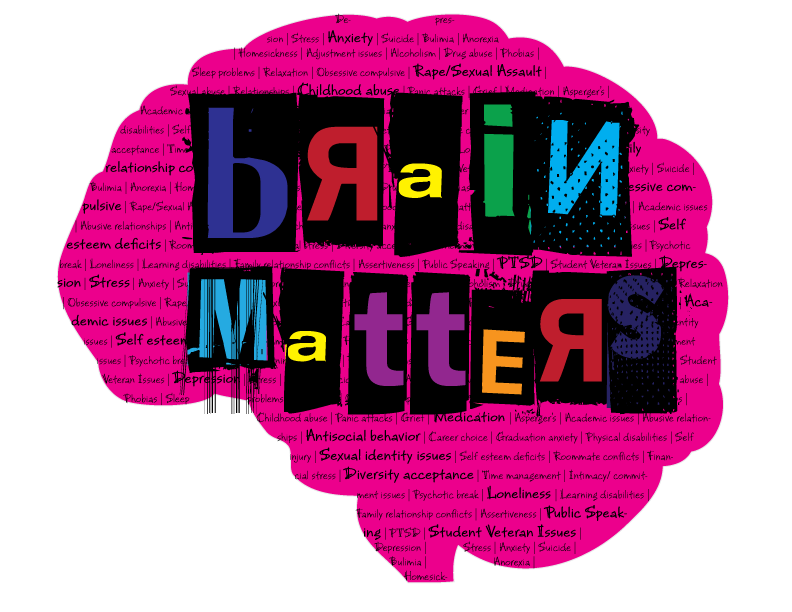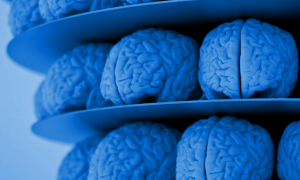Dr. BJ Guenther interviews 2 experts in the field of neurofeedback. Discussion includes definition and uses of neurofeedback for mental health issues such as depression, anxiety, ADHD, etc. Listen here.
qEEG in the media
Articles and videos related to qEEG in the media
EEG – Lessons From A Half-Million Brains
Listen to the full podcast here Jay Gunkelman Podcast
This week we’re joined by QEEG Diplomate (yes, that’s a term!) and founder of Brain Science International Jay Gunkelman, to talk Electroencephalography. After analyzing over a half-million EEG scans, Jay has a pretty robust set of human brain data at his disposal… And he uses that body of knowledge to guide the work of psychiatric and other health professionals who make proscriptive recommendations about patients’ brains.
Differential effects of theta/beta and SMR neurofeedback in ADHD on sleep onset latency
Pharmaco-EEG: A Study of Individualized Medicine in Clinical Practice
Ronald J. Swatzyna, Gerald P. Kozlowski, and Jay D. Tarnow
Abstract
Pharmaco-electroencephalography (Pharmaco-EEG) studies using clinical EEG and quantitative EEG (qEEG) technologies have existed for more than 4 decades. This is a promising area that could improve psychotropic intervention using neurological data. One of the objectives in our clinical practice has been to collect EEG and quantitative EEG (qEEG) data. In the past 5 years, we have identified a subset of refractory cases (n = 386) found to contain commonalities of a small number of electrophysiological features in the following diagnostic categories: mood, anxiety, autistic spectrum, and attention deficit disorders, Four abnormalities were noted in the majority of medication failure cases and these abnormalities did not appear to significantly align with their diagnoses. Those were the following: encephalopathy, focal slowing, beta spindles, and transient discharges. To analyze the relationship noted, they were tested for association with the assigned diagnoses. Fisher’s exact test and binary logistics regression found very little (6%) association between particular EEG/qEEG abnormalities and diagnoses. Findings from studies of this type suggest that EEG/qEEG provides individualized understanding of pharmacotherapy failures and has the potential to improve medication selection.
Prof. Juri D. Kropotov Interview 2013
Juri speaks about the recent ERP meeting in St Petersburg Russia, held during the summer’s “white nights” when the night sky does not darken fully and the night is very short. Juri is interviewed in his offices, only 200 meters from Pavlov’s famous laboratory.
The discussion of the new methodology of ICA decomposition of the ERP, as well as the benefit of ERP added to the EEG/qEEG is discussed. There is discussion of the diagnostic specificity of the ERP methods, and the concept of biomarkers.
Medication Failure: EEG/qEEG Findings Provide Evidence
This is the PowerPoint “Medication Failure: EEG/qEEG Findings Provide Evidence” as presented at ISNR Conference Workshop 20 September 21, 2013
Presented by:
Ronald J. Swatzyna, Ph.D., L.C.S.W.
The Tarnow Center for Self-Management
drron@tarnowcenter.com
Vijayan K. Pillai, Ph.D.
The University of Texas at Arlington
pillai@uta.edu
Electroencephalography (EEG) Underused Investigative Tool in Hospitals, Study Finds

A retrospective study of patients who had in-hospital electroencephalography (EEG) has established that EEG is a valuable tool that could be deployed more widely to identify treatable causes of impaired consciousness in the hospital setting.
The study is published in the April issue of the Mayo Clinic Proceedings.
Altered mental status (AMS) and paroxysmal spells of uncertain origin are common among hospitalized patients. Impaired consciousness can sometimes be linked to metabolic or cardiac causes, but some of these spells may represent seizures or non-convulsive epilepsy, which can be detected only by electroencephalography (EEG). Although EEG is the key test in making these diagnoses, it is relatively underused in the inpatient setting owing to lack of availability and neurologic consultation at many hospitals in the United States.
House Again Passes Thompson’s Bipartisan Amendment to Improve TBI, PTSD Treatment For Troops & Veterans

Washington, DC, Jul 18 – Congressman Mike Thompson (CA-1), co-chair of the bipartisan Military Veterans Caucus, today again secured the passage of his bipartisan amendment with Congressman Pete Sessions (TX-32) to expedite new and innovative treatments to our nations’ veterans and active duty soldiers suffering from Traumatic Brain Injuries (TBI) and Post-Traumatic Stress Disorder (PTSD). This is the second time the House has passed the amendment. In May, the TBI treatment expansion initiative was adopted as a House amendment to the National Defense Authorization Act (NDAA) for Fiscal Year 2013 (H.R. 4310), however the Senate has yet to take up this bill. Today it was passed as an amendment to H.R. 5856, the Department of Defense (DOD) Appropriations Act for Fiscal Year 2013. The amendment passed by voice vote. The House will vote on H.R. 5856 later this week.
“Our troops and veterans have earned the very best treatment and care that we can provide,” said Thompson. “But sometimes the best treatments aren’t available at military and veteran medical facilities. My amendment will make sure that our heroes who return from combat with TBI or PTSD have access to the highest quality care our nation has to offer. I will keep introducing this legislation until it is law. It’s what our heroes have earned.”
“I am pleased that our colleagues have joined us in recognizing the importance of providing treatment options not currently available within military and veteran medical facilities to those who return from combat with TBI or PTSD,” said Sessions. “As we approach the Memorial Day holiday, I believe we can best honor our nation’s active duty soldiers and veterans by ensuring that their health is a top priority and that they have access to the most effective treatments available.”
Technical Details in EEG Diagnosis of Autism

Many have heard experts in the neurofeeback field state vehemently that the “ICA deartifacting ruins the EEG”, and that “remontaging to a Laplacian montage ruins coherence”. There are internet tutorials attempting to support these opinions. This self-publication on-line on a commercial site is not the same as peer review, and many publish bad opinions without an alternative approach even considered.
Rather than engage in the meaningless back and forth of mere opinions, I thought it was better to wait for the decision of the jury.. a jury of our peers inherent to the peer reviews in professional publications seen in the field of neuroscience. I comfortably accept the judgment of the field’s journal’s editors.
Harvard’s famous Electroencephalographer, Frank Duffy M.D. just published a large scale well designed study. Some of the key aspects in the paper are highlighted and discussed below:
“Remaining eye blink and eye movement artifacts, which may be surprisingly prominent even during the eyes closed state, were removed by utilizing the source component technique [42, 43] as implemented in the BESA (BESA GmbH, Freihamer Strasse 18, 82116 Gräfelfing Germany) software package”
Electrophysiological assessments of cognition and sensory processing in TBI: Applications for diagnosis, prognosis and rehabilitation
This article from the International Journal of Psychophysiology shows the full acceptance of the use of EP and ERP testing to evaluate TBI. The paper is co-authored from the Defence Veterans Brain Injury Center (DVBIC), and this paper shows none of the quibbling or caveats about a lack of specificity or sensitivity in TBI. It is a paper that looks at full adoption for use, not a call for plenty of more studies and funding!
This ERP technology is ready for prime time in TBI. The peer review and publication process is how science moves forward, and the use of ERP for TBI evaluations is now accepted by the peer review process, but not the EEG/qEEG yet fully, and definitely not EEG based discriminants for TBI, which are now counseled against in the peer reviewed literature.
Jay
ABSTRACT
Traumatic brain injuries are often associated with damage to sensory and cognitive processing pathways. Because evoked potentials (EPs) and event-related potentials (ERPs) are generated by neuronal activity, they are useful for assessing the integrity of neural processing capabilities in patients with traumatic brain injury (TBI). This review of somatosensory, auditory and visual ERPs in assessments of TBI patients is provided with the hope that it will be of interest to clinicians and researchers who conduct or interpret electrophysiological evaluations of this population. Because this article reviews ERP studies conducted in three different sensory modalities, involving patients with a wide range of TBI severity ratings and circumstances, it is dif!cult to provide a coherent summary of !ndings. However, some general trends emerge that give rise to the following observations and recommendations:
1) bilateral absence of somatosensory evoked potentials (SEPs) is often associated with poor clinical prognosis and outcome;
2) the presence of normal ERPs does not guarantee favorable outcome;
3) ERPs evoked by a variety of sensory stimuli should be used to evaluate TBI patients, especially those with severe injuries;
4) time since onset of injury should be taken into account when conducting ERP evaluations of TBI patients or interpreting results;
5) because sensory de!cits (e.g., vision impairment or hearing loss) affect ERP results, tests of peripheral sensory integrity should be conducted in conjunction with ERP recordings; and
6) patients’ state of consciousness, physical and cognitive abilities to respond and follow directions should be considered when conducting or interpreting ERP evaluations.




